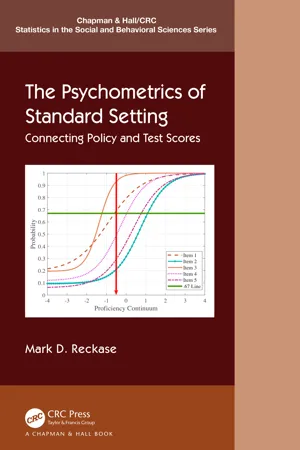
- 328 pages
- English
- ePUB (mobile friendly)
- Available on iOS & Android
About This Book
This book provides a unifying structure for the activities that fall under the process typically called "standard setting" on tests of proficiency. Standard setting refers to the methodology used to identify performance standards on tests of proficiency. The results from standard setting studies are critical for supporting the use of many types of tests. The process is frequently applied to educational, psychological, licensure/certification, and other types of tests and examination systems. The literature on procedures for standard setting is extensive, but the methodology for standard setting has evolved in a haphazard way over many decades without a unifying theory to support the evaluation of the methods and the validation of inferences made from the standards. This book provides a framework for going beyond specific standard setting methods to gain an understanding of the goals for the methods and how to evaluate whether the goals have been achieved.
The unifying structure provided in this book considers policy that calls for the existence of performance standards, the relationship of proficiency test design to the policy, and tasks assigned to subject matter experts to help them convert the policy to estimates of locations on the reporting score scale for the test.The book provides guidance on how to connect the psychometric aspects of the standard setting process to the intentions of policy makers as expressed in policy statements. Furthermore, the structure is used to support validity arguments for inferences made when using standards. Examples are provided to show how the unifying structure can be used to evaluate and improve standard setting methodology.
Frequently asked questions
Information
Table of contents
- Cover
- Half-Title
- Series
- Title
- Copyright
- Dedication
- Contents
- Preface
- Author biography
- 1 Conceptual Overview for a Theory of Standard Setting
- 2 A Theory of Standard Setting
- 3 Agency, Policy Definitions, Content-Specific Definitions and Minimum Qualifications
- 4 The Construct and the Test Designed to Measure the Construct
- 5 The Kernel of the Standard Setting Process
- 6 Panelist Selection and Training
- 7 Feedback and Auxiliary Information
- 8 Estimating the Standard
- 9 Evaluating the Standard Setting Process
- 10 Trends in Standard Setting Design and Development
- References
- Index